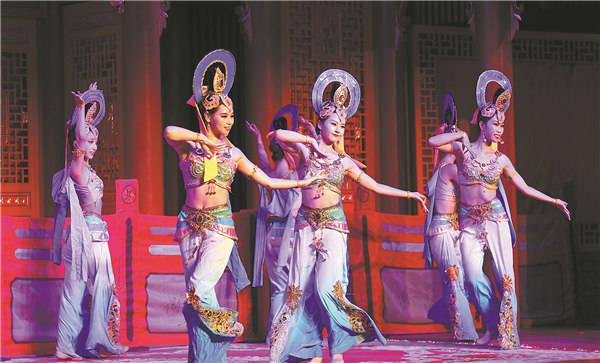Bringing Dunhuang's murals to life

Dancers from the Beijing Dance Academy and the Art Vocational College at the Lanzhou University of Arts and Science in Gansu province perform works based on Dunhuang's ancient murals at the Chinese Traditional Culture Museum in Beijing on Aug 21. [Photo by Zou Hong for China Daily]
Born in Lyon and raised in Paris until she was 6, Chang Shana returned to China during the War of Resistance Against Japanese Aggression (1931-45). When she was 12, she arrived in Dunhuang, where she endured harsh desert conditions working alongside her father as he made sketches of the Buddhist murals and statues in the Mogao Caves.
Her deep affection for Dunhuang has endured, influencing her work in painting and design.
Following in her father's legacy, Chang Shana replicated wall paintings and figurines from different periods. In 1948, she moved to Boston to study art and museology, and then returned to China to work with the renowned architect Lin Huiyin, who offered her a job as an assistant lecturer at the architecture department of Tsinghua University, and introduced her to design and education.
Lin's mentorship inspired Chang to incorporate Dunhuang elements into her design projects, including on silk scarves, as well as in the interior decorations for notable Beijing landmarks such as the Great Hall of the People.
The Everlasting Beauty of Dunhuang exhibition is Chang Shana's latest tribute to her father's dedication, continuing her lifelong commitment to preserving and celebrating Dunhuang's artistic heritage.





 Print
Print Mail
Mail
